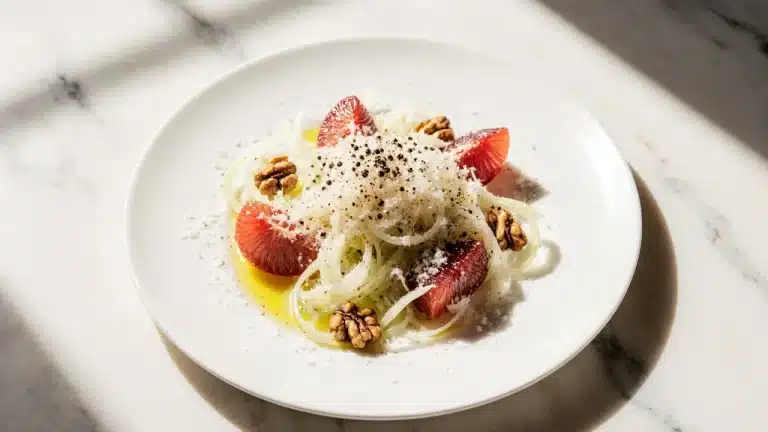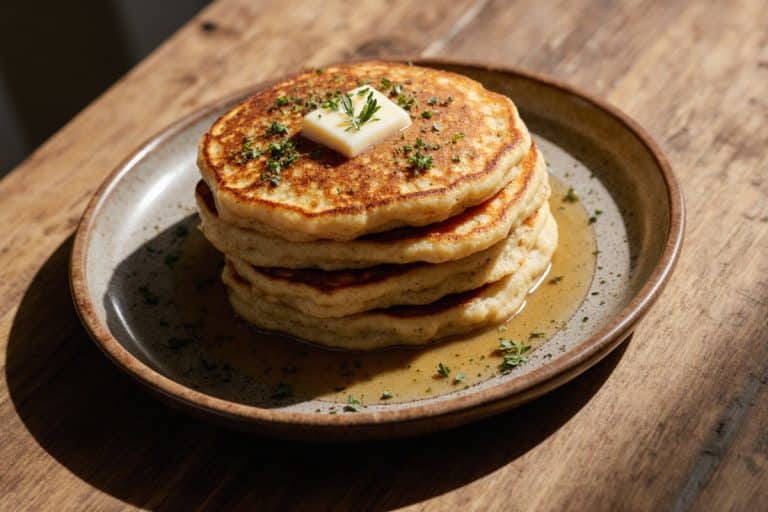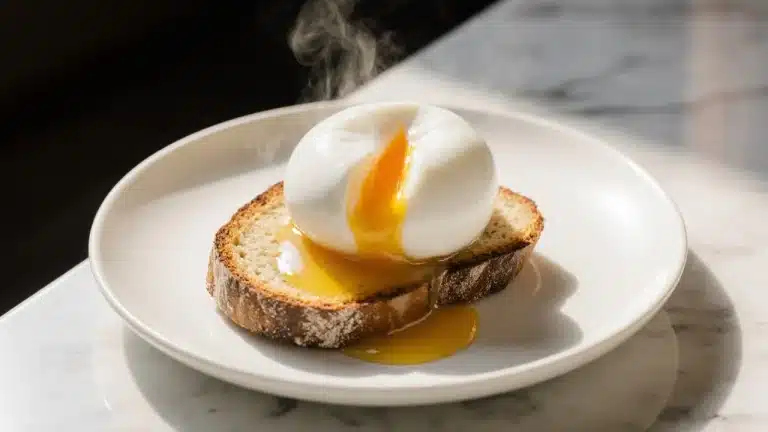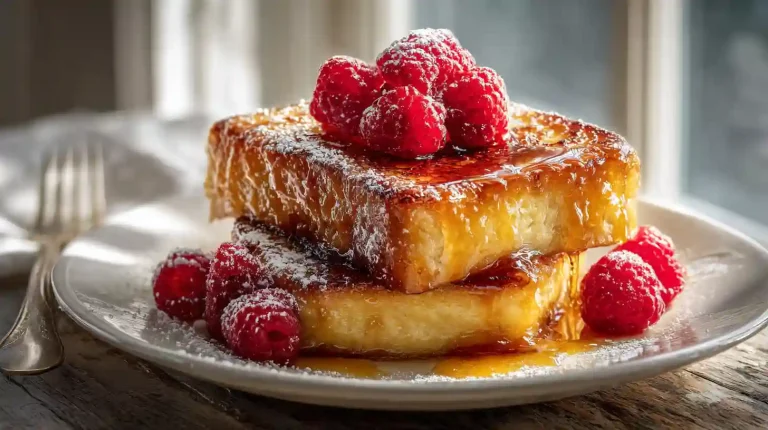Gordon Ramsay Breakfast Casserole
The gordon ramsay breakfast casserole isn’t just a recipe—it’s my culinary redemption story. Years ago, my morning meals were a disaster: rubbery eggs, soggy bread, flavors flatter than a deflated soufflé. Then I watched Ramsay break down technique like a surgical chef, and everything changed. This isn’t just about throwing ingredients into a dish; it’s about precision, layering, and transforming simple breakfast components into a flavor explosion. Every time I make this casserole, I’m not just cooking—I’m engineering breakfast perfection. Busy home cooks, listen up: this isn’t complicated. With five strategic techniques, you’ll turn a basic egg bake into a restaurant-worthy morning feast that’ll have your family wondering if a Michelin-starred chef snuck into your kitchen.
Gordon Ramsay’s Breakfast Casserole
Ingredients
Equipment
Method
- Preheat oven to 190°C (375°F). Butter ceramic baking dish generously.
- Brown sausage in a skillet until deep caramel edges form, about 5-7 minutes. Remove and set aside.
- Sauté onions and bell peppers in the remaining fat until caramelized. Season aggressively.
- Layer bread cubes, browned sausage, sautéed vegetables, and cheese in the baking dish.
- Whisk together eggs, milk or cream, and seasonings. Pour over the layered ingredients.
- Let soak for 15 minutes, then bake for 35-40 minutes until center sets. Rest for 5-10 minutes before slicing.
- Garnish with fresh herbs and a light dusting of Parmesan before serving.
Nutrition
Notes
Love this recipe?
Give us 5 stars and comment!What Makes a Ramsay Breakfast Casserole?
Signature Techniques
Gordon Ramsay’s breakfast casserole isn’t just another egg bake—it’s a savvy way to tackle morning hunger. Bold flavors come from careful layering and strong seasoning. The key is creating depth with thoughtful ingredient placements so that every bite packs a punch. Imagine it like building a flavor skyscraper, where each ingredient supports the next.
Ingredient Quality
In Ramsay’s kitchen, quality always wins over quantity. Choose farm-fresh eggs, top-notch sausage, and artisan bread to build your base. Gruyère cheese adds a nutty, upscale touch compared to regular cheddar. Using day-old rustic bread gives a fantastic texture with crispy edges and a soft center. Remember: never skimp on ingredient quality.
Ramsay Technique Highlights
Techniques can set apart home cooks and professionals. Cook the sausage until it gets rich, caramelized edges. Sauté the vegetables to let out their best flavors. Less stirring, more development. Take your time to caramelize onions and let peppers blister. Each step is not just cooking—it’s crafting flavors.
Resting & Garnish
Good things take time. Let the casserole rest for 5-10 minutes after baking. This step helps the proteins settle, which means you’ll get cleaner, more stable slices. Fresh herbs like parsley or chives aren’t just for show; they boost flavor. A sprinkle of Parmesan gives a crispy, golden top that screams confidence in the kitchen.
Nutrition Breakdown
Per Serving Values
You can expect around 170-200 kcal in a 100g serving. The macronutrient breakdown provides balanced breakfast energy: 10-12g protein, 11-14g fat, and 8-11g carbohydrates. It’s filling without being overwhelming.
Per 100 g Values
Nutritional analysis shows it’s high in protein and moderate in calories. It’s perfect for those of us looking for lasting energy. The macronutrient distribution promotes steady metabolism.
Notable Vitamins & Minerals
This dish is more than just a meal; it’s packed with nutrients. Vitamin A from peppers and eggs benefits vision. Calcium and vitamin D help keep bones strong. Iron from spinach and eggs boosts oxygen transport. And don’t forget, folate supports cell health.
Pros & Cons
Pros: High in protein, nutrient-rich, and super adaptable. Cons: Might be high in cholesterol, so watch your portion sizes. Finding balance is crucial—enjoy responsibly.
Step-by-Step Method
Typical Ingredients (Baseline)
Your essential ingredients include: farm-fresh eggs, quality sausage, rustic bread, Gruyère cheese, bell peppers, onions, and fresh herbs. Important: Always use fresh ingredients.
Preheat Oven & Prep Dish
Set your oven to a precise 375°F (190°C). Generously butter a ceramic baking dish. Ceramic distributes heat more evenly than metal.
Brown Sausage & Sauté Veggies
Cook the sausage until it’s deep brown—this takes about 5-7 minutes. Use the remaining fat to sauté your vegetables. Caramelization brings out amazing flavors. Season well.
Assemble, Soak, Bake, Rest & Garnish
Layer the bread, sausage, vegetables, and cheese. Pour in your seasoned egg mixture. Let it soak for 15 minutes. Bake for 35-40 minutes until the center is set. Don’t forget to let it rest for 5-10 minutes before garnishing with fresh herbs.
Common Mistakes & Fixes
Dryness Fixes
If it turns out too dry, add more cream or cut down on the baking time. Check your casserole at 35 minutes—the liquid-to-egg ratio is key.
Sogginess Fixes
If you end up with a soggy bottom, try lightly toasting the bread. Use day-old bread and cut back on wet ingredients. Managing moisture is an essential skill.
Bland Flavor Fixes
Make sure to season boldly. Always taste the egg mixture before pouring it in. Not seasoning enough is a big no-no in Ramsay’s kitchen.
Burnt Top Fixes
If the top starts to brown too quickly, tent it with foil. Keep a close eye—golden is beautiful, burnt is a disaster.
Variations & Smart Sides
Spanish Twist
Try adding chorizo, manchego, roasted red peppers, and smoked paprika for a Mediterranean kick.
Italian Twist
Pancetta, mozzarella, sun-dried tomatoes, and fresh basil will transport you to an Italian morning.
Southwestern Twist
Add black beans, corn, jalapeños, and pepper jack for a spicy touch.
Mediterranean Twist
Include feta, kalamata olives, roasted tomatoes, and oregano for some coastal flavors that make breakfast exciting.
Serving & Presentation Tips
Resting for Clean Slices
Patience leads to perfection. A 5-10 minute rest guarantees lovely, stable portions.
Garnish with Fresh Parsley or Chives
Herbs aren’t just nice to have—they are essential for enhancing flavor.
Parmesan Top for Golden Crust
A light dusting of Parmesan creates a crisp and irresistible surface.
Resting Improves Texture
Allow the proteins to settle for a more enjoyable texture.
For more inspiration on breakfast casseroles, check out this page.
Video tutorial: breakfast casserole

FAQ – gordon ramsay breakfast casserole
Question: Can I make this ahead of time?
Answer: Absolutely. Assemble the night before, refrigerate, and add 5-10 minutes to baking time.
Question: Is this good for meal prep?
Answer: Perfectly. Keeps well in the fridge for 3-4 days and reheats like a dream.
Question: How do I prevent a soggy bottom?
Answer: Use day-old bread, toast it lightly, and don’t overload with wet ingredients.
Question: Can I make this vegetarian?
Answer: 100% yes. Replace sausage with plant-based alternatives or extra veggies.
Question: What if I mess up the first time?
Answer: Practice makes perfect. Every burnt edge is a lesson, every soggy bite a chance to improve.
Conclusion
When you pull this casserole out of the oven, golden and crackling, you’ll feel like a kitchen warrior. The aroma will hit first—that perfect blend of caramelized sausage, herbs, and melted cheese. Your family won’t just eat breakfast; they’ll experience it. This isn’t just cooking; it’s creating memories, one perfectly layered bite at a time. The magic happens when you stop following recipes and start understanding technique. Ramsay taught me that. Every slice tells a story of patience, precision, and passion. So roll up those sleeves, trust the process, and transform your morning. Now it’s your turn to create breakfast brilliance.








